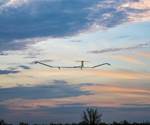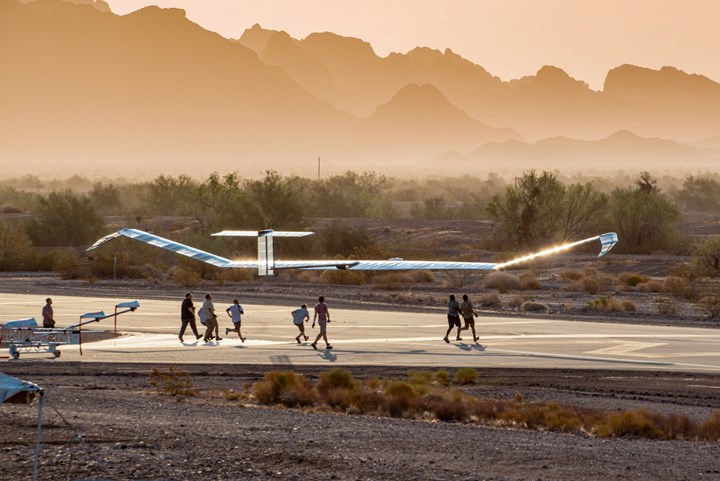Airbus, Salam join forces for HAPS connectivity services using composite Zephyr drone
The solar-powered, carbon-neutral unmanned aircraft system (UAS) will support and progress the development of digital connectivity in Saudi Arabia.
Airbus’ (Toulouse, France) high altitude platform system (HAPS) Connectivity Business has signed a strategic partnership with Salam (previously ICT), a Saudi Arabian telecommunications provider and part of the Mawarid Media & Communications Group (MMCG), to progress the development of private networks, Internet of Thing (IoT) applications, disaster management solutions and other connectivity and high-altitude Earth observation services from the stratosphere to serve the kingdom of Saudi Arabia.
Zephyr, a high-altitude unmanned aircraft system (UAS) drone, developed by Airbus in collaboration with the U.S. Army, is a solar-powered HAPS solution that will reportedly provide low-latency, direct-to-device 5G connectivity services, in addition to persistent high-resolution imaging and live-video, delivered from the stratosphere (see “Airbus successfully completes 2021 summer test flights for Zephyr HAPS satellite aircraft”). A wingspan of 82 feet and a carbon fiber composite fuselage enable it to carry payloads “of up to 50 pounds at altitudes of 70,000 feet.” Airbus believes that Zephyr will support in bridging the digital divide and will bring connectivity services to those who are currently unserved or underserved from a solar-powered and carbon-neutral platform.
“We see in Airbus’ Zephyr platform a key asset to provide private network services, IoT solutions as well as civil, governmental and non-governmental applications,” Ahmad Al-Anqari, Salam CEO, explains. “There are numerous use cases for the platform’s capabilities and we look forward to this partnership with Airbus to serve the Saudi market in support of the kingdom’s vision 2030 goals.”
Related Content
-
Automated robotic NDT enhances capabilities for composites
Kineco Kaman Composites India uses a bespoke Fill Accubot ultrasonic testing system to boost inspection efficiency and productivity.
-
Development of a composite liquid hydrogen tank for commercial aircraft
Netherlands consortium advances cryogenic composites testing, tank designs and manufacturing including AFP, hybrid winding, welding of tank components and integrated SHM and H2 sensors for demonstrators in 2025.
-
Ceramic matrix composites: Faster, cheaper, higher temperature
New players proliferate, increasing CMC materials and manufacturing capacity, novel processes and automation to meet demand for higher part volumes and performance.














